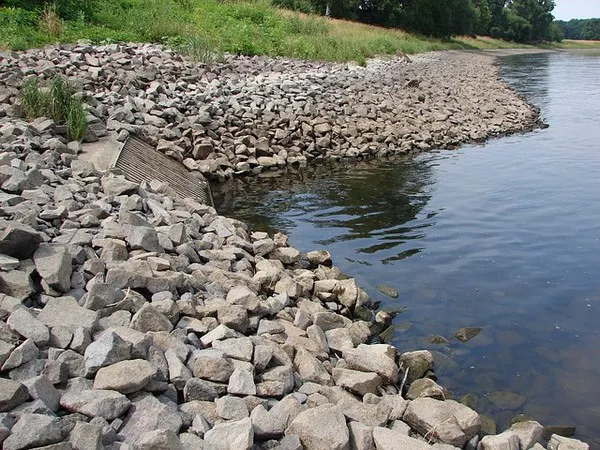Sewage systems are the unsung heroes of urban infrastructure, working tirelessly to ensure public health and environmental protection. These systems are a crucial part of our modern cities, but not all sewage systems are created equal. In fact, there are various types of sewage systems, each with its own unique characteristics and advantages. In this article, we will delve into the different types of sewage systems, their components, and their applications.
Combined Sewer System
A combined sewer system, also known as a CSS, is one of the oldest and most traditional sewage systems in use. In a combined sewer system, both sanitary sewage (from toilets, sinks, and showers) and stormwater runoff (from rainfall or snowmelt) are collected in the same set of pipes and transported to a treatment facility.
While combined sewer systems are cost-effective and relatively simple to construct, they pose significant challenges during heavy rainfall or snowmelt events. These systems can become overwhelmed, leading to sewage overflows into rivers, lakes, or other bodies of water, causing pollution and public health hazards.
Separate Sewer System
In contrast to combined sewer systems, separate sewer systems, as the name suggests, have distinct pipes for sanitary sewage and stormwater runoff. This separation prevents overflows during heavy precipitation events, making them more environmentally friendly and less prone to contamination.
Sanitary sewage is transported to wastewater treatment plants for purification, while stormwater runoff typically flows directly into local water bodies or is managed through separate stormwater infrastructure. Separate sewer systems are the preferred choice in areas with frequent heavy rains or a high risk of flooding.
Sanitary Sewer System
Sanitary sewer systems are responsible for transporting wastewater from residential, commercial, and industrial sources to treatment facilities. These systems are designed to handle only sanitary sewage and not stormwater runoff, ensuring that the treatment process is not overwhelmed by excess water.
Sanitary sewer systems consist of a network of pipes, lift stations, and treatment plants. The collected sewage undergoes a series of treatment processes to remove pollutants and pathogens before being released back into the environment. This type of system plays a vital role in maintaining public health and protecting water quality.
Stormwater Sewer System
Stormwater sewer systems, also known as storm drains or storm sewers, are designed exclusively for the collection and transportation of stormwater runoff. These systems prevent flooding in urban areas by efficiently directing rainwater away from streets and properties.
Stormwater sewers often feature curbside drains, catch basins, and underground pipes that convey stormwater to local water bodies or retention ponds. These systems are crucial for managing stormwater in densely populated areas and reducing the risk of property damage and erosion.
Combined Sanitary and Stormwater Sewer System (CSSS)
The combined sanitary and stormwater sewer system (CSSS) is a variation of the combined sewer system, where stormwater is allowed to flow into the same pipes as sanitary sewage. However, CSSS systems incorporate features like overflow control structures and storage tanks to minimize overflows during heavy rainfall events.
This hybrid approach aims to balance the cost-effectiveness of combined systems with the environmental benefits of separate systems. CSSS systems are commonly found in older cities with limited space for extensive infrastructure upgrades.
Vacuum Sewer System
Vacuum sewer systems are a modern and innovative approach to sewage transport. In these systems, wastewater is transported through a network of small-diameter pipes using vacuum technology. A central vacuum station creates a pressure differential that draws sewage from individual homes or buildings into a central collection point.
Vacuum sewer systems have several advantages, including lower construction costs, reduced maintenance requirements, and the ability to transport sewage over long distances with minimal energy consumption. They are often used in remote or hilly areas where gravity-based systems are impractical.
Pressure Sewer System
Pressure sewer systems are another alternative to traditional gravity-based sewage systems. In a pressure sewer system, sewage is collected from individual properties and pumped through small-diameter pipes to a central collection point or treatment facility.
These systems are particularly suitable for areas with challenging topography, such as hills or valleys, where gravity-based systems are not feasible. Pressure sewer systems are also used in sparsely populated areas where the cost of installing a traditional sewage system would be prohibitive.
Conclusion
Sewage systems are a critical component of modern urban infrastructure, ensuring the safe and efficient disposal of wastewater while protecting public health and the environment. The various types of sewage systems discussed in this article cater to different needs and conditions, ranging from densely populated cities to remote rural areas.
Choosing the right sewage system depends on a variety of factors, including population density, topography, budget constraints, and environmental considerations. As urban areas continue to grow and environmental concerns become more pressing, the development and maintenance of effective sewage systems will remain a priority for city planners and engineers. By understanding the different types of sewage systems available, we can make informed decisions to meet the needs of our communities while safeguarding the planet for future generations.

